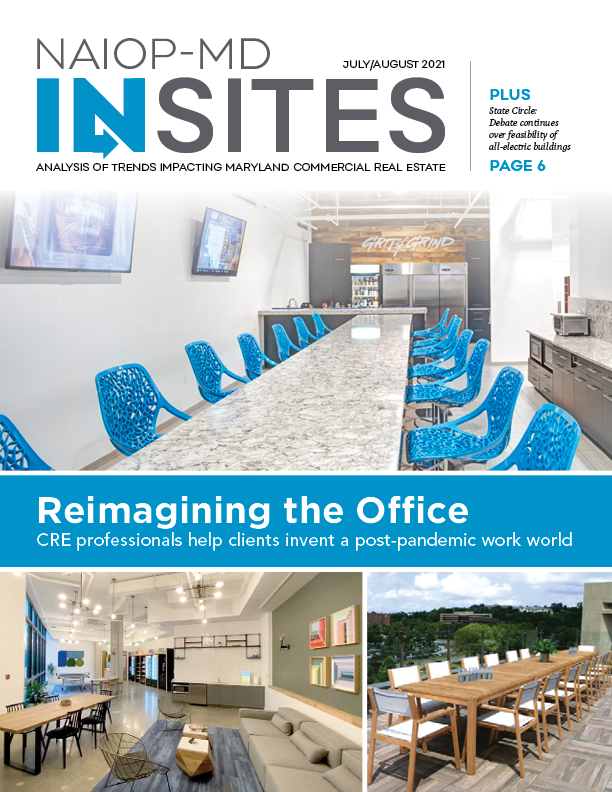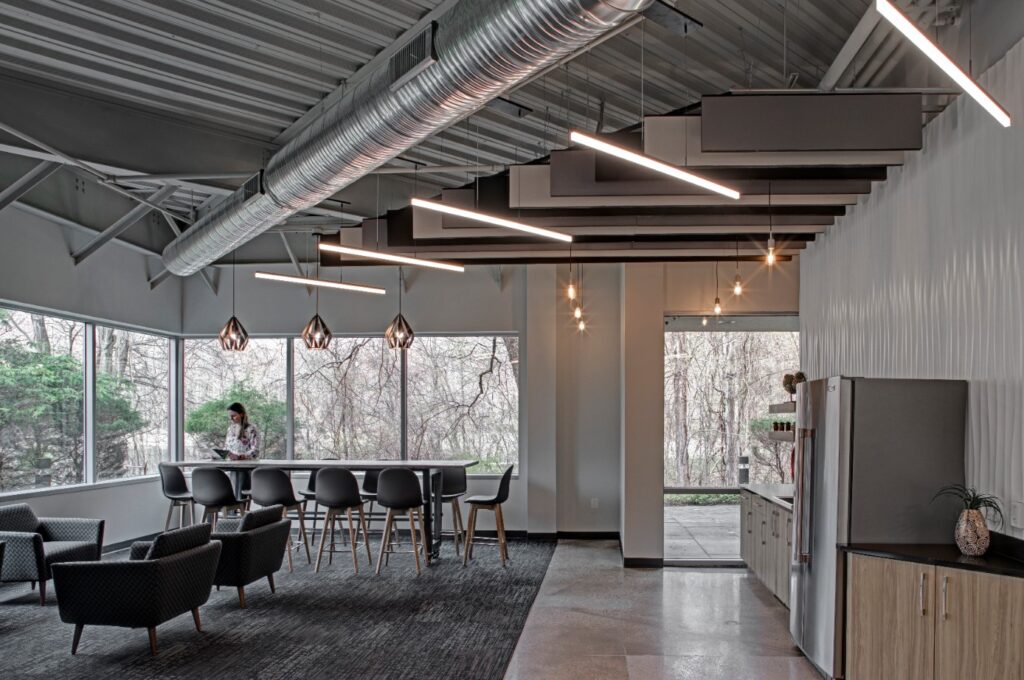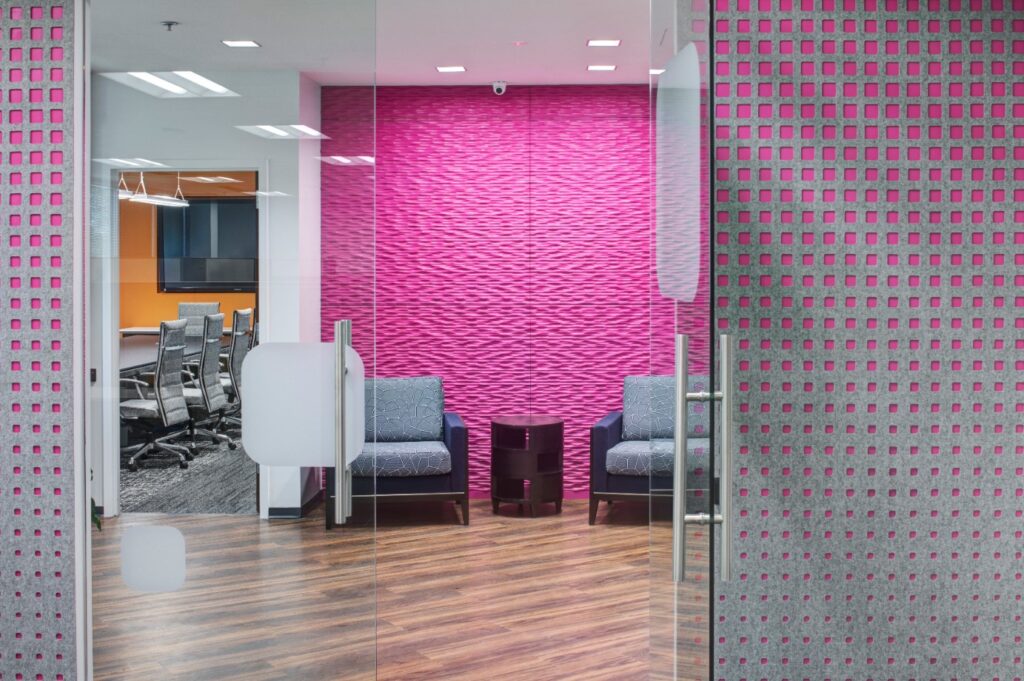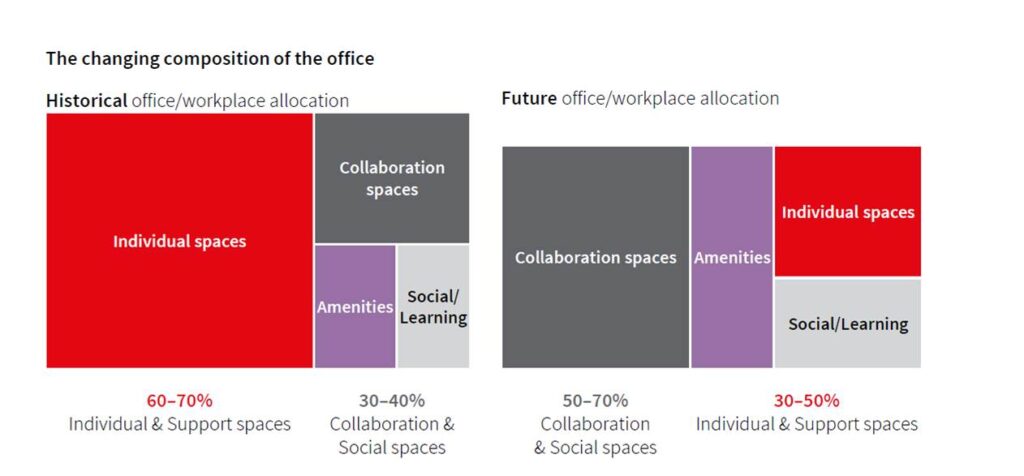
As Maryland approached the July 1 expiration of state COVID-19 restrictions, Adam Cook’s schedule flooded with “re-entry trainings.” A Managing Director at JLL, Cook conducted session after session with clients to discuss workplace policies and practices, office design, property-management technologies and individual behaviors that would help each company bring more workers back to offices and ultimately create new, unique models for work in a post-pandemic environment.
“Traditionally, JLL has created and managed workspaces,” Cook said. “What we have transitioned to — and this was a long time coming, but COVID accelerated it — was really to become experts in work.”
As employers increasingly focus on reviving and altering their office operations, commercial real estate companies are being called to provide new levels of service. They are collaborating with clients to figure out how to pull out of a year of largely empty offices and forge a new, different and vibrant world of work.
The immediate challenge is how to entice workers back to office buildings.
“Companies need to look at making workspaces more comfortable,” said Sandy Sawicki, Vice President, Interior Design at JMT Architecture.
Employees who have worked from home since the pandemic began, want to feel safe back in company offices. But they also want comforts – ample daylighting, ergonomic furniture, sit-stand desks, attractive surroundings and a variety of workspaces, including outdoor space, Sawicki said. “Biophilia is very big now. The WELL Building Standard is becoming much more prominent. Employers and landlords can’t ignore that.”

Through conversations with clients and surveys of workers, CRE professionals are learning that building amenities can also be strong enticements to current, home-based workers “and those amenities range from food trucks to fitness centers,” said Will McCullough, Senior Vice President, Lee & Associates | Maryland.
“Forward-thinking developers and owners are creating more and more in-building amenities,” said Mark Deering, Partner, MacKenzie Commercial Real Estate Services. “The first floors of multi-story office buildings, particularly in the suburbs, are being used for multi-purpose areas, like training rooms and lounges. There are areas where you can get a latte, wait for the food trucks to arrive, have lunch with a colleague, conduct a small meeting or just work on your laptop in a space that feels like a nice restaurant.”
That knowledge has prompted some CRE companies to take uncommon initiatives to help their tenants attract workers back to office buildings.
At Merritt Properties, “we are trying to reach out to as many employees in our buildings as possible not just the few, designated contacts with each tenant,” said Vince Bagli.
Before the pandemic began, Merritt had started adding amenities to several buildings, including “shared conference rooms, training rooms, touch-down spaces, areas with TVs and desks and comfy couches where people could relax or work,” Bagli said. Now the company is “sending out e-mails to as many employees as possible with photos of finished amenities to show them there is plenty of good stuff going on and encourage them to come back.”

JMT Architecture’s renovation of the Clearview Group’s headquarters included multiple, eyecatching features that range from bold colors to a hip lounge to a simulated golf course. Photo courtesy of Merritt Properties and JMT Architecture.
At St. John Properties, “we continue to find new ways to amenitize our buildings and business parks to foster a productive work environment,” said Sean Doordan, Senior Vice President, Leasing and Acquisitions. “Health and safety were pushed to the forefront during COVID and we took the opportunity to invest in new ultraviolet air purification systems in 23 of our multi-story office buildings. Research indicates this was the best way to further enhance the health of our buildings such that employees felt comfortable in their offices.”
For many companies, re-establishing in-office operations involves additional challenges. Some require renovations to support altered working arrangements. However, the cost per square foot of tenant improvements has increased by as much as 80% due to soaring prices for construction materials, Deering said. In addition, many tenants aren’t comfortable signing long-term leases due to current uncertainties about the economy. Landlords, he said, are responding to some needs by offering flexible lease arrangements, such options to terminate a lease early if the tenant repays the unamortized cost of the renovations.
Deciding how to effectively reconfigure office space, however, is difficult at this point. Sawicki and other professionals are urging clients not to make major changes yet. Instead, employers need to gain a thorough understanding of what kinds of work arrangements their employees want then start setting up and testing scenarios as more people return to the office.
“Floorplans will have to be nimble as people determine what changes will be temporary and what changes will be permanent,” McCullough said. To help clients work through those issues, “we are bringing in experts in different sectors — space planning and design consultants, LEED professionals and others — and taking a more consultative approach to our work with owners and tenants.”
“The challenge is getting the right mix of space,” Cook said. “This is why modularity and a high variety of options is so important. Instead of the two or three types of workspaces we saw in the past, now there could be 10 times that amount. We might see 30 types of workspaces when you add in all the casual, non-reservable spaces and the components that are more resi-mercial” (a mix of residential and commercial design).
Based on current and pre-pandemic trends, however, most employers can expect to see one broad-based change in office space. Whereas offices previously tended to include roughly 65% individual workspace and 35% collaborative or social space, “that equation is being flipped on its head,” Cook said. “Offices are being designed from the amenities and collaboration spaces out. The last thing we get to in the floor plan is seat counts.” Furthermore, those seat counts are trending lower because of the widespread embrace of hybrid work arrangements and the expectation that more workers will use reservable, rather than dedicated, workstations.
Embracing that more collaborative workspace, however, will be vital to many companies’ success in the new version of the work world.
The “grand experiment in remote work” has left some companies struggling with “the whole aspect of training, collaborating, mentoring, networking and, most importantly, preparing the next generation of leadership,” Deering said.
However, a productive hybrid work model combined with attractive office space that supports collaborative work could generate a new model of effectively conducting that essential, interpersonal work, Cook said. That combination could also support the kind of vibrant culture that companies need to attract and retain talent.
“Space creates culture,” Cook said. “It is very hard to create that allegiance with your employees when you never meet people… That’s why we need to create reasons for people to want to come back into offices so we can all fully engage.”
